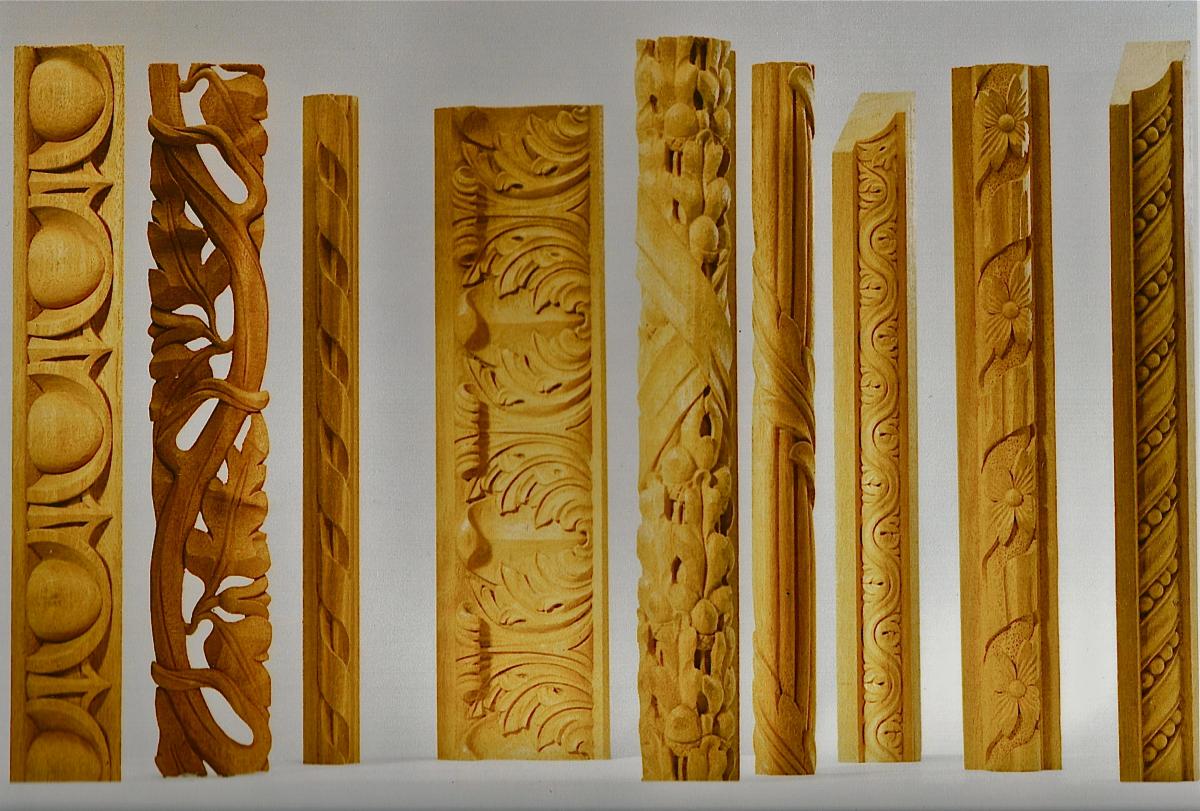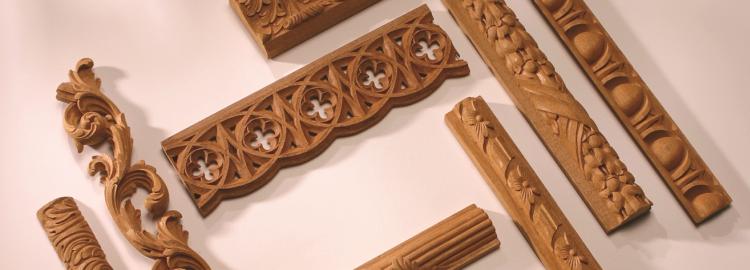You are here
Hand Carved Architectural Mouldings
Even a simple moulding can add texture, light and shadow to a room, structure or object. The contrasting light and darkness produced by the varying angles produces a heightened sense of definition. At Agrell Architectural Carving, we take it one step further, enriching each of the four principal classical mouldings with traditional ornamentation.
The cyma-recta or cymatium
The cymatium is traditionally decorated with the acanthus flower, also known as the anthemion and occasionally as the honeysuckle. An excellent example can be found in the cornice of the doorway of the Erechtheum, an ancient Greek temple located on the north side of the Acropolis in Athens, Greece.
The cym-reversa or ogee
A moulding with an ogee-shaped profile is one in which there is, from high to low, a concave arc flowing into a convex arc, with vertical ends. The Greek ogee moulding is traditionally carved with the Lesbian leaf—a motif of heart-shaped leaves. The Roman ogee, also known as the cyma-reversa, has a lower curve that is convex and a higher one that is concave and is carved with two Lesbian leaves; however, in this case the outer edge of the leaf forms a trefoil cusp. The enriched ogee design also includes two beads and four reels underneath each leaf.

Agrell Architectural Carving: An example of various hand carved mouldings in wood.
The echinus or ovolo
The echnus or ovolo moulding is a simple, convex quarter-round moulding and is almost always carved with an egg and dart enrichment. A common design motif in the classical architecture of Europe since the Renaissance, the design consists of an egg-shaped object alternating with a V-shaped element such as an arrow, anchor or dart. It is found in Ancient Greek architecture and was also used by the Romans. However, the Roman carver spread the design out and pierced holes on either side of the tongue, transforming it into an egg and tongue design. As with the ogee, the carved ovolo design is also embellished with two beads and four reels beneath each egg.
The torus
The torus is a larger convex moulding, approximating a semicircle or semi-ellipse. It is commonly used on the bases of columns and pilasters, on socles or plinths, and was a popular adornment for medieval window and door arches and on the elaborate ceiling mouldings of the Renaissance era. Early Antique torus mouldings were delicately carved with acanthus and laurel leaf motifs, and later, in A.D. 13, with the more ornate double guilloche. Other enrichments resemble a bundle of rods around which ribbons are twisted, or appear to be plaited, or wrapped in foliage. More intricate decoration includes clusters of fruit and foliage intertwined with ribbons.


